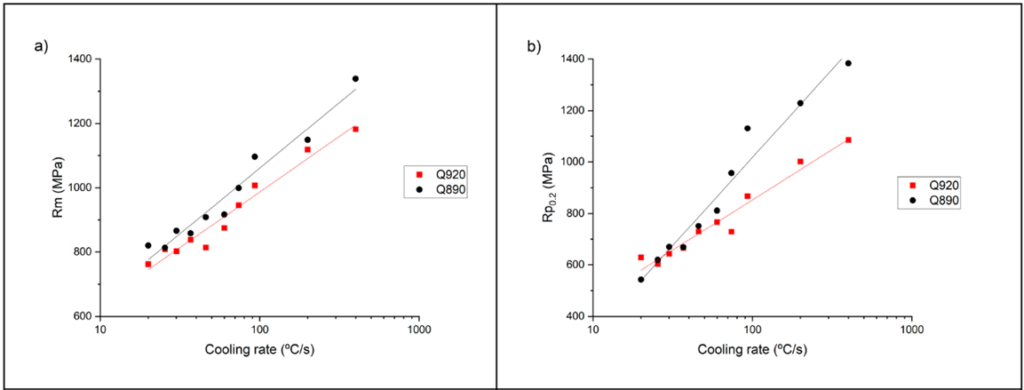EFFICIENT HEAT TREATMENTS:
“Reduction of energy consumption by acting on austenization temperatures”
Decarbonization is a challenge for all energy-intensive industries. In heat treatment technology, production methods that use electric heating can impact their carbon footprint quickly and effectively by purchasing certified renewable energy. But does the potential for improvement end with green energy purchase?
Rationalization of energy consumption in heat treatment can be achieved by intervening on different factors like: working temperatures, holding time, carbon footprint of treated alloys, elimination of operations, rejection rate, thermal insulation, strain hardening, modification of pre- and post-heat treatment operations, energy recovery and reuse, use of heat from other manufacturing processes, etc.
In the following lines a practical case focused on reducing energy consumption by lowering austenization temperatures (without risking the furnace load).

Related contents
Energy efficiency and decarbonization
Reduction of energy consumption by lowering austenization temperatures
When it comes to heat treatments, there is a great variability in the criteria for determining temperatures and operating times. In general, specific rules are applied to facilitate decision-making and guarantee that heat treatments will be satisfactory, at the expense of using a safety factor in temperature and time values.
In the specific case of heat treatments involving the austenization of steels, general rules tend to harm both the carbon footprint of the process and the mechanical performance of the material. This can resolved by minimizing the safety factors just mentioned.
AZTERLAN systematically addresses this strategy through the following sequence of analysis:
- Calculation of the theoretical austenization temperature of the alloy
- Minimization of deviations in temperature measurement systems and homogeneity of the furnaces
- Regulation of heating control in the furnace
- Adjustment of the time required for heat to penetrate to the core of the product
To define the optimized austenisation temperature, the minimum theoretical temperature determined by the thermodynamics of the alloy must be taken into account. This temperature must be exceeded throughout the volume of the parts to be treated.
To ensure that this minimum is exceeded, various factors must be taken into account. Firstly, the entire working volume of the furnace must be above this temperature. Because of that, the accreditation of heat treatments under NADCAP or CQI-9 includes the requirement of furnace uniformity, also known as TUS (Temperature Uniformity Survey). Secondly, the temperature measured by the furnace control instruments must correspond to the effective treatment temperature. This translates into a requirement for the NADCAP and CQI-9 to verify the accuracy of the measurement system, or SAT (System Accuracy Test). The oven setpoint must therefore be higher than the strictly theoretical one, taking into account that the coldest point of the oven must reach the desired temperature and that the measurement uncertainty of the control equipment must be compensated.
In addition, heat transfer occurs through temperature gradients. The PID (Proportional-Integral-Differential) control of the oven with parameters for critical damping would lead to a very long treatment. To avoid this inconvenience, the programming of overshoots in the control should be used, so that the desired temperature is reached in a time that makes sense industrially.
Once this adjustment has been made, it remains to determine the time that the part remains in the furnace so that the center of the thickest section of the product is soaked to the desired temperature. Simulation software and instrumented test tubes that accompany the load are very useful at this point.
To show the potential impact of this optimization strategy, a real case covering the tempering treatment of an API X65 steel is presented below.
Case study
Tempering treatment of API X65 steel
Before the process leading to reducing safety factors when it comes to temperature, this steel was being austenized at 920°C. The determination of the theoretical heat treatment temperatures was done using the Thermocalc thermodynamic prediction software, experimental tests were performed in the furnaces under study to determine the SAT and TUS corrections, and simulations were performed using the specific heat treatment software SYSWELD HT to define the overshoot and the holding times.
TFollowing the heat treatment rationalization analysis, the production austenization temperature has been reduced to 890°C. The holding times have remained intact, but the whole treatment duration has been reduced by reaching the setpoint in a shorter time. The resulting benefits exceed the environmental aspect: Mechanical strength has been significantly improved as shown by the curves that accompany these lines.
These curves have been developed by applying a methodology developed by AZTERLAN to complement the sustainability approach of heat treatment optimization studies also taking into account mechanical properties. This method combines the benefits of Jominy hardenability tests with the spatial resolution of Small Punch Testing (SPT) tests. It can study the effect of multiple combinations of austenitization temperature, quenching speed and tempering conditions very effectively. This study methodology belong to those classified as High Throughput Testing methods.

Microstructure of API X65 steel with austenitization temperature at 920°C (left) and at 890°C (right) (DOI: 10.3390/met13111797).

Improvement in mechanical properties achieved by going from 920°C to 890°C of austenization temperature in an API X65. a) Mechanical strength; b) Yield limit (DOI: 10.3390/met13111797).

